Hypocampus is a site for Medical students built on Cortexio.
In https://blog.cortexio.se/2017/01/13/hypocampus-the-start/ we wrote about how the project started and described the methodology for how we came up with what was to be built in our first beta version. Here we continue to write about what the development looked like and a bit more around the company.
Hypocampus grows – April / May 2016
In addition to fixing basic parts such as database, server hosting, certificates, logins etc, there were two important parts we needed to get in place: Editing tools for material and navigation among the material.
At first glance, text editing may seem like a simple problem to solve; we’ve been doing it on computers for decades. But we also want to be able to categorize the material into chapters and courses, be able to link words and headings in chapters and be able to add pictures and videos.
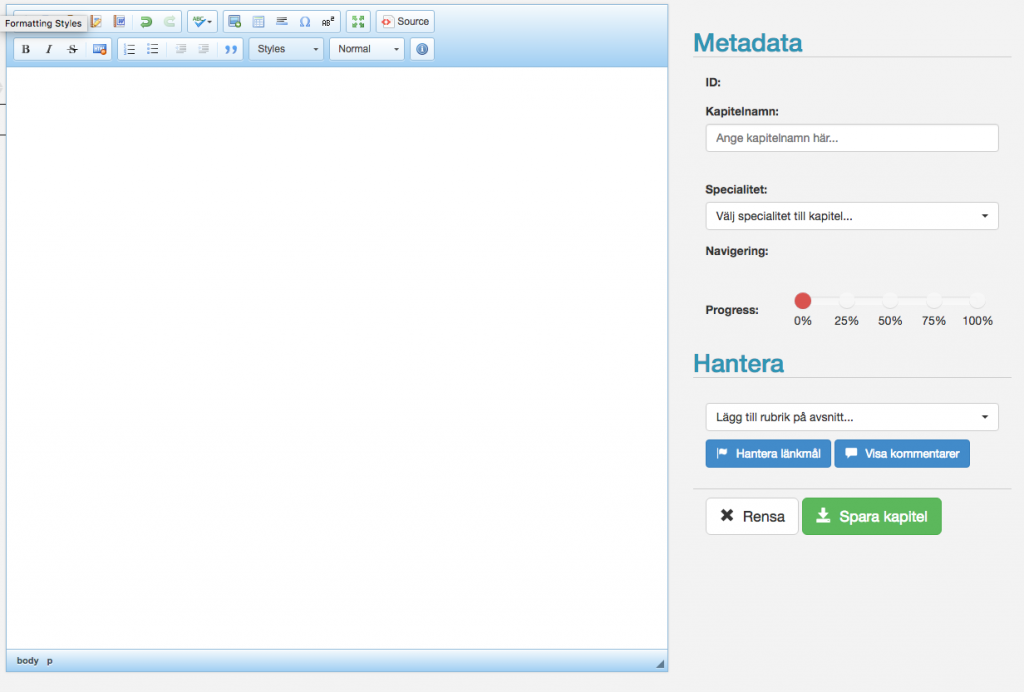
To solve these problems we have built our text editor around ckeditor . We also have our own tools for determining which chapters are included in a course, managing links and images.

Dermatology – May 2016
Our first goal was to be ready with the Dermatology course for the re-examination in August 2016. For this course we had good material to start from and contact with specialists who were willing to review. Below is a collage of what the presentation of chapters looked like during the year.
Version 1 and 2:
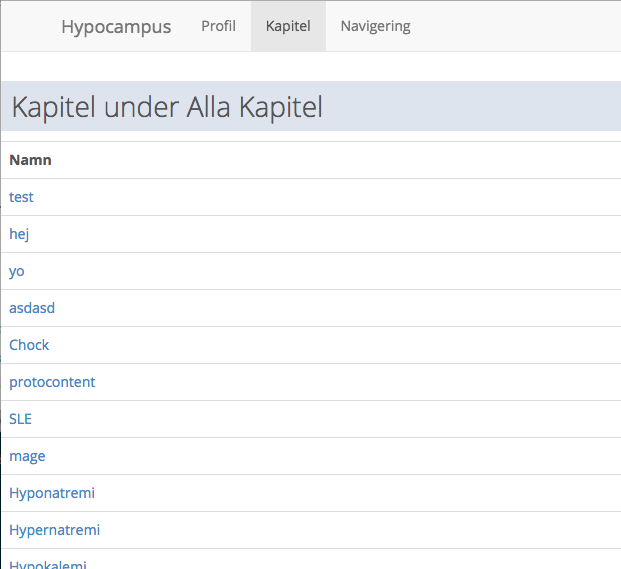
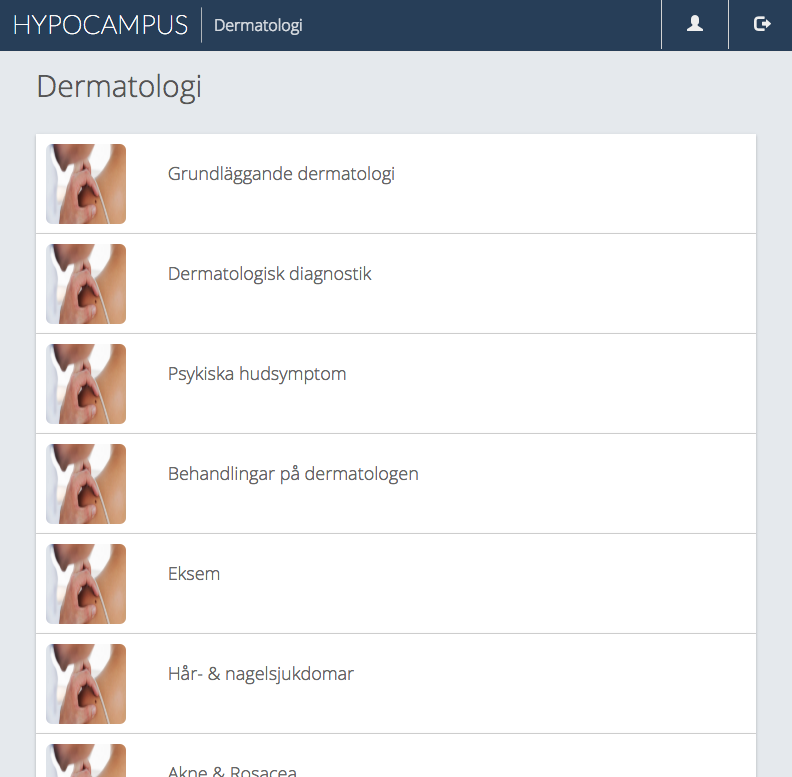
Version 3 and 4:


Version 5 and 6:

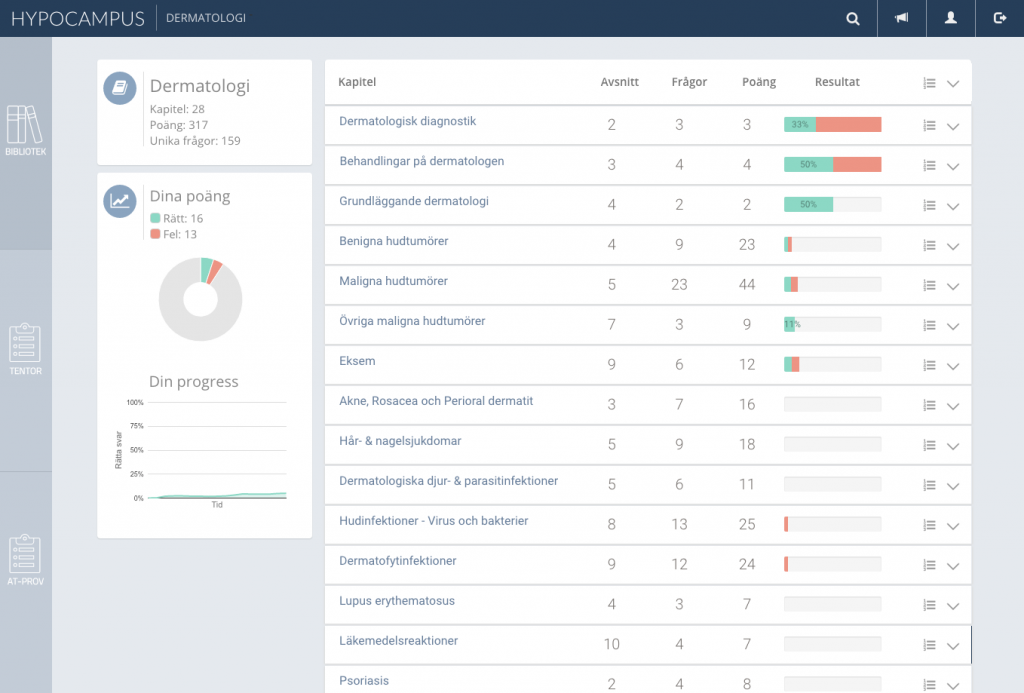
Links in the material & better navigation – June 2016
A major improvement in navigation came in June when we added the opportunity to create links between chapters in the material. It works as a reverse wikipedia link. The Link Target is set where the description of the word is located. When the Link target is highlighted, the system goes through all other chapters to try to find the word or synonyms for the word and create links to the Link Target from there. In this way, the editors do not have to manually try to create all the links, which saves a lot of time.
In early June, even the classic category cards were in place, which have lived with ever since:

The Surgery Course – June 2016
In June 2016, we got in touch with course managers for the Surgery course at Sahlgrenska. They were developing a question application and we started a collaboration to test the Hypocampus on the surgery course in the fall of 2016. At that time we had only mulitple choice questions in the system, but in the surgery course, and many other courses, MEQ (modified essay questions) is a central part. In MEQ questions, the student is guided through a patient case and must make a decision based on the information at hand.
Question section, surgery course – July / August 2016
So we needed to implement support for MEQ questions, submit questions and materials for the surgery course before the start of the course, 22/8.
The process of making MEQ questions possible was more complicated than we first thought. The MEQ questions must be in order, it is not possible to see the description of the next question as it may contain the answer, but it must be possible to see the previous description etc. When we looked at example questions and exams it was not consistently divided: Some questions were divided into several levels: 1.2 A, B, C, 1.3 A, B, C where there was the same case and description for everything under item 1, while other questions had fewer levels. And how would we do with text answers? Trying to auto-correct?
After going through at least three different variants of MEQ questions, we felt satisfied, one week before the start of the surgery course.
Version 1 – MCQ only:
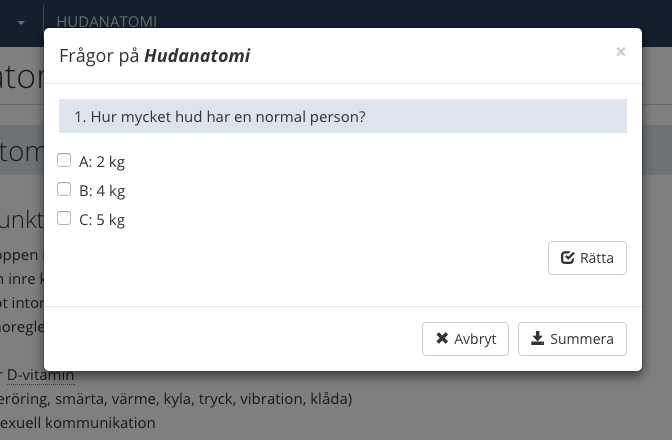
Version 2 – text response:
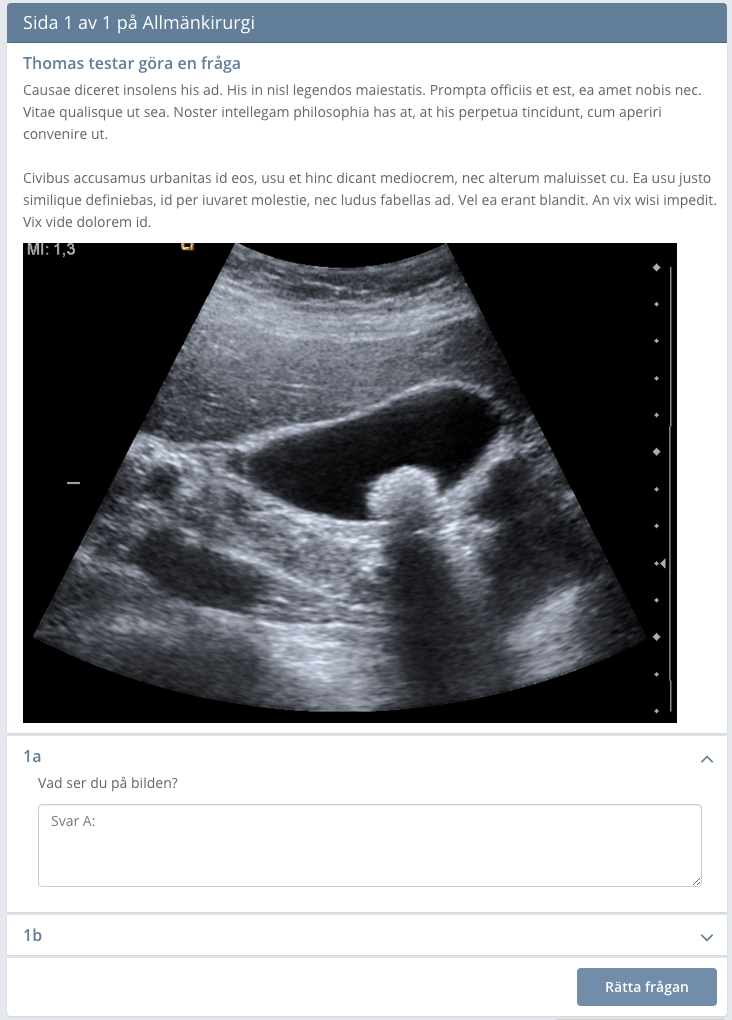
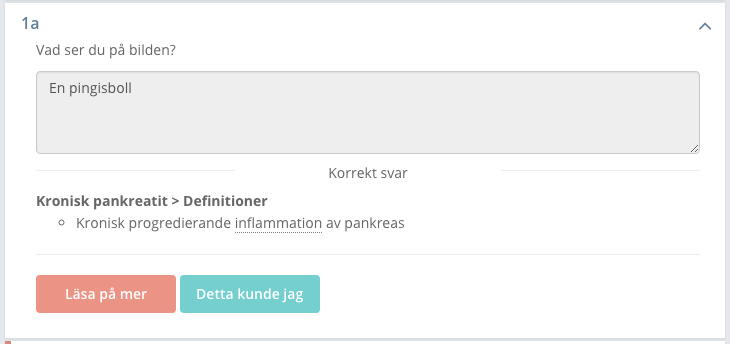
Version 3 – the correct answer is shown on the right:
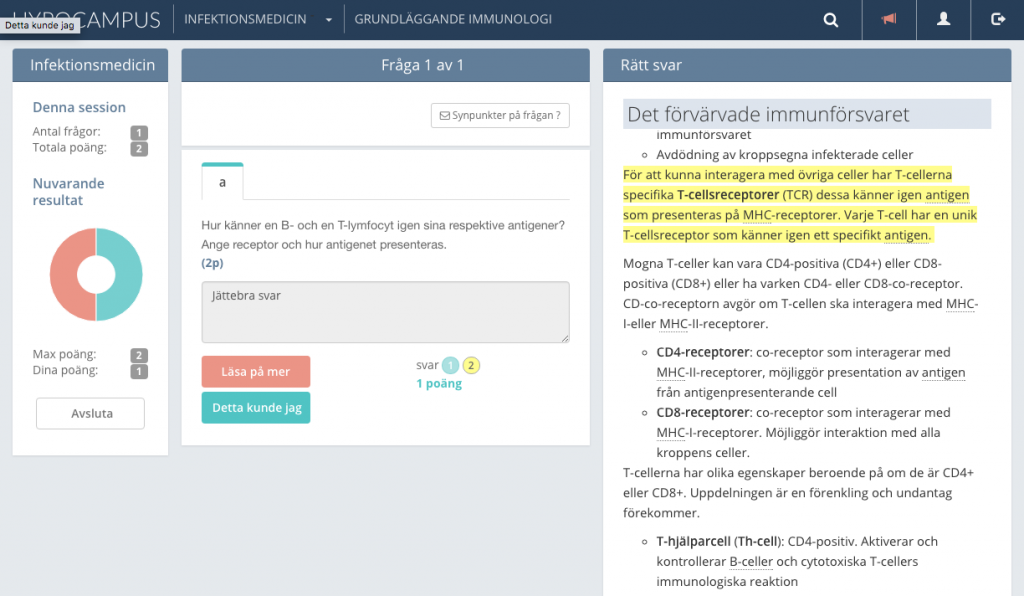
In the last version we also got text markings to show more precisely where in the text the answer is.
That’s all for this post, more to come!